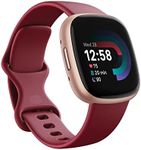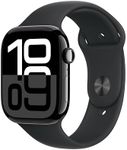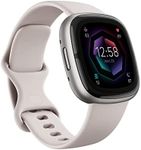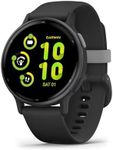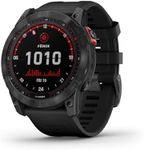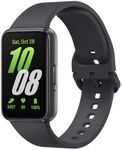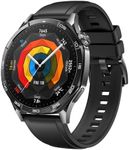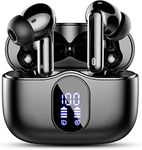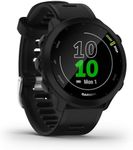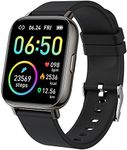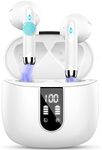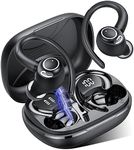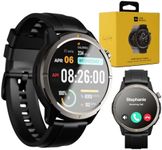Buying Guide for the Best Smart Watches
When choosing a smartwatch, it's important to consider how it will fit into your lifestyle and meet your specific needs. Smartwatches can offer a range of features from fitness tracking to notifications and even standalone phone capabilities. Understanding the key specifications will help you make an informed decision that aligns with your daily activities and personal preferences.CompatibilityCompatibility refers to how well the smartwatch works with your smartphone's operating system, such as iOS or Android. This is crucial because it determines the extent to which you can use the smartwatch's features. Some smartwatches are designed to work best with specific phone brands or operating systems. If you have an iPhone, you might want to consider a smartwatch that is optimized for iOS, and similarly for Android users. Ensure that the smartwatch you choose is compatible with your phone to maximize its functionality.
Battery LifeBattery life indicates how long the smartwatch can operate before needing a recharge. This is important because it affects how often you'll need to charge the device, which can impact convenience and usability. Battery life can range from a single day to several weeks, depending on the model and usage. If you plan to use your smartwatch for intensive activities like GPS tracking or streaming music, look for models with longer battery life. For casual use, a shorter battery life might be sufficient.
Fitness and Health TrackingFitness and health tracking features include heart rate monitoring, step counting, sleep tracking, and more. These features are important for users who want to monitor their health and fitness levels. The extent of tracking capabilities can vary widely; some models offer basic step counting, while others provide advanced metrics like blood oxygen levels and ECG readings. Consider what health metrics are important to you and choose a smartwatch that offers those specific features.
DisplayThe display of a smartwatch refers to the screen size, resolution, and type (such as LCD or AMOLED). This is important because it affects how easy it is to read notifications and interact with the watch. Larger displays with higher resolutions provide clearer and more vibrant visuals, which can be beneficial for users who frequently use their smartwatch for reading messages or viewing apps. If you prefer a more compact design, a smaller display might be more suitable.
Water ResistanceWater resistance indicates how well the smartwatch can withstand exposure to water. This is crucial for users who plan to wear their smartwatch while swimming or in wet conditions. Water resistance is usually measured in meters or ATM (atmospheres), with higher numbers indicating better protection. If you intend to use your smartwatch for swimming or water sports, look for models with higher water resistance ratings. For everyday use, a basic level of water resistance might be adequate.
ConnectivityConnectivity options in a smartwatch include Bluetooth, Wi-Fi, and sometimes cellular capabilities. This is important because it determines how the smartwatch connects to your phone and the internet. Bluetooth is standard for syncing with your phone, while Wi-Fi can offer more independence from your phone. Some smartwatches also offer cellular connectivity, allowing you to make calls and send messages without a phone. Consider how you plan to use your smartwatch and choose the connectivity options that best suit your needs.
Design and CustomizationDesign and customization refer to the aesthetic and personalization options available for a smartwatch, such as interchangeable bands and watch faces. This is important for users who want their smartwatch to reflect their personal style. Some smartwatches offer a wide range of customization options, allowing you to change the look of your watch to match different outfits or occasions. If style is a priority for you, look for models that offer extensive customization features.
